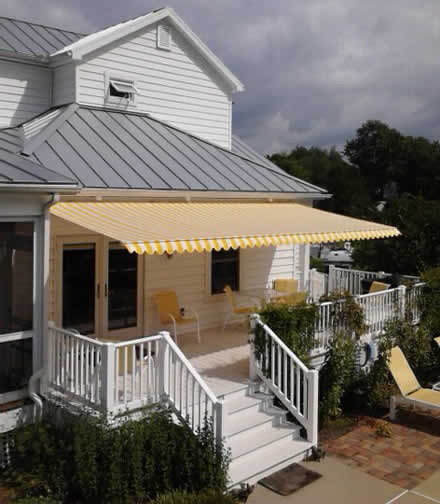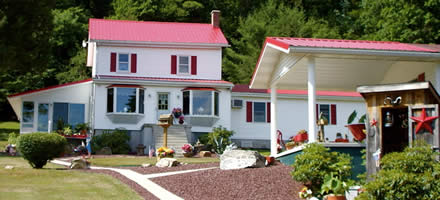How to Cool Your Home without Air Conditioning
The commonly held belief to keep a home cool in summer is to have air conditioning, but that's not the whole story. Here are some other ways I'll show you how to achieve lower temperatures in your home without needing to resort to this artificial climate controlling system that can be expensive to install and then to run.
Back in the days before anyone had heard of refrigeration, people used a collection of natural methods to prevent their homes from overheating under the searing rays of the summer sun. Some of them are pure common sense while others are a little more inventive, but they all work and you'll kick yourself for not trying them yourself.
Reducing Energy Costs
 As an aside, if you already use a central, zone, portable or window air conditioner but are tired of paying high utility bills for the excessive power it uses during the hot season, you can use these methods to reduce your power bills. This works by making the AC system work less hard to maintain a comfortable temperature indoors because it's not fighting with such high internal temperatures in the first place.
As an aside, if you already use a central, zone, portable or window air conditioner but are tired of paying high utility bills for the excessive power it uses during the hot season, you can use these methods to reduce your power bills. This works by making the AC system work less hard to maintain a comfortable temperature indoors because it's not fighting with such high internal temperatures in the first place.
Here's how to cool your home the natural way:
Shading
Preventing the sun from striking your home's structure in the first place will prevent excessive heat-up experienced by most buildings that are always exposed to the sun's direct rays. Shading does this
The main objection people have on this point is that it's not always easy to shade the entire house, especially the roof. The answer is to not go overboard on trying really difficult feats of engineering, but just put up shading where you can.
Every square foot of wall space that you can stop the sun from reaching will equate to a small reduction in temperature. The larger the area of external wall and roof you can shade, the lower the internal temperature will be.
Blinds and Awnings
This is an extension of the previous paragraphs on shading, but it's a job well worth carrying out on a home. A great way to keep the sun from beaming in through your windows and increasing the temperature inside like a greenhouse is to shade the windows so the sun's rays can't get in!
Window blinds and retractable awnings are great for achieving this and when fitted to all windows that get sun exposure, will count toward the total net heating reduction of your home's interior.
White Paint
 Sometimes it is just not possible to keep the sun from reaching certain parts of your home's walls. There is another effective solution in painting the walls brilliant white.
Sometimes it is just not possible to keep the sun from reaching certain parts of your home's walls. There is another effective solution in painting the walls brilliant white.
White walls reflect more of the sun's heat than darker colors, meaning white walls will heat up less than dark walls when exposed to the direct sun.
Dark walls absorb more heat and radiate it through their structure into the interior of your home, so you can reduce the heating effect by making sure your walls reflect more heat than they absorb by having white walls!
Attic Insulation
A surprising amount of heat can build up in an un-insulated attic space, that then manages to radiate into the rest of the home adding to the internal temperature. You can reduce that extra load by fitting radiant barrier insulation to help reflect some of the sun's heat back out through your roof tiles.
Attic Fan
Another way to help keep the attic cool is to fit an attic fan to circulate fresh air from outside through the space and prevent it from heating up while stagnant. An opening at each end of the attic allows fresh air to pass through with the fan to assist and carry excess heat out with it.
Doors and Windows
During the hot part of the day, it helps to keep doors and windows closed to help keep cooler air inside the house (and hotter air outside). This is a very old traditional technique used to stay cool during the day and uses a kind of "cave" effect to maintain a cooler interior while the temperatures soar outside.
Of course this works better if your home has either very thick walls or is well insulated. When the sun goes down and temperatures drop, open all the windows to allow the cooler night breezes to pass through and replenish the air inside with cooler, fresher air.
Don't Cook in the Kitchen
 This may (or may not) surprise you to hear it, but when you cook in your kitchen, you are effectively increasing the temperature inside your home!
This may (or may not) surprise you to hear it, but when you cook in your kitchen, you are effectively increasing the temperature inside your home!
Cookers, ovens, hobs, grills and hot plates etc all produce a lot of artificial heat. That's additional heat contributing to the home's internal temperature increase and exactly what you do not want!
The solution is to get out the barbecue or install a summer outdoor kitchen so all your cooking appliances and the heat they create stays outside. And when the sun is shining and the weather is amazing, why wouldn't you want to share a meal with your family outdoors!
Water Heaters and Storage
A lot of homes still have hot water storage tanks inside the home and these, no matter how well insulated they are, can still add a degree or several to the internal temperature when you don't want it. If you're considering making changes to your hot water system, a better option is to get an on-demand water heater so there is no storage tank wasting your energy to keep it (and the surrounding space) hot!
Solar heating systems are even better because they have the hot water storage tanks situated above the roof. Plus once installed, they cost nothing to produce all the hot water you can use on a sunny day!
Light Bulbs
If you haven't done this already, change your old power sucking incandescent light bulbs for frugal LED bulbs. Their cost has come down a lot recently, they are very economical to run and they last for years.
Incandescent bulbs give off a lot of heat which is simply wasted energy plus additional heat where you don't want it during summer. On the flip side, LED bulbs give off very little or no heat so all the energy they use (which is minimal) goes to produce only light, which is exactly what you do want!
Putting it All into Practice
All of the above advice is useful for cutting the internal temperature of your home and is relatively easy enough to put into practice if you have a mind to. It is really helpful if you don't have any AC and can mean a cooler home environment for greater comfort. In some cases it can be so effective, you might decide you don't even need AC!
If you still need some additional cooling during the hottest weather, ordinary fans are helpful. Or you could opt for a portable evaporative cooler to create a nice cold breeze indoors (or outdoors) as a low cost alternative to fixed or portable air conditioners that cost much more to run and defeat the object of this strategy in any case.
[Back to TOP]